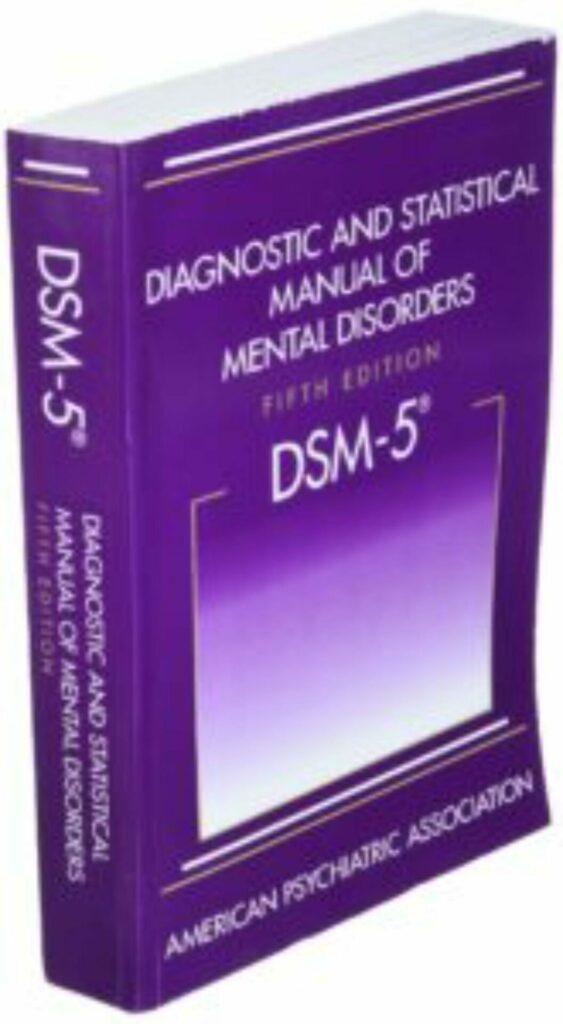The American Psychiatric Association has just released the fifth edition of the Diagnostic and Statistical Manual of Mental Disorders (DSM-5), and with it comes a new diagnosis for obsessive-compulsive disorder (OCD): DSM-5 OCD. This new criterion is based on research that has been conducted over the past few years, and it further replaces the DSM-IV criteria for OCD. So what does this mean for those who are affected by OCD? Let’s take a closer look at DSM-5 OCD and how it might affect you or someone you know.
Contents
What Is DSM-5?
The DSM is the American Psychiatric Association’s manual for diagnosing mental disorders. It is used by clinicians and researchers to diagnose and classify mental disorders. The DSM-IV was published in 1994, and the DSM-V was published in 2013. The DSM-V is the most recent edition of the DSM.
What Is OCD?

Obsessive-compulsive disorder is a mental disorder that characterizes by obsessions and/or compulsions. Obsessions are repetitive and persistent thoughts, urges, or images that are intrusive and cause distress or anxiety. Compulsions are repetitive behaviors that a person feels compelled to do to relieve the anxiety caused by the obsessions. OCD can further be a debilitating condition that interferes with a person’s ability to function in everyday life.
What Are the New DSM-V Criteria for OCD?
The DSM-V criteria for OCD are as follows:
• A. Presence of obsessions, compulsions, or both: Obsessions are the recurrent and persistent thoughts, urges, or images that are intrusive and cause distress or anxiety. Compulsions are the repetitive behaviors or mental acts that a person feels compelled to do to relieve the anxiety caused by the obsessions.
• B. The individual attempts to ignore or suppress the obsessions or compulsions or to neutralize them with some other thought or action (i.e., by performing a compulsion).
• C. The obsessions or compulsions are time-consuming (taking up more than one hour per day) or cause clinically significant distress or impairment in social, occupational, or other important areas of functioning.
• D. The disturbance is not attributable to the physiological effects of a substance (e.g., a drug of abuse, a medication) or another medical condition (e.g., head trauma).
• E. The disturbance is not better explained by the presence of another mental disorder (e.g., panic disorder with agoraphobia, separation anxiety disorder, body dysmorphic disorder, trichotillomania [hair-pulling], skin picking disorder, hoarding disorder, autism spectrum disorder, attention-deficit/hyperactivity disorder).
What Does The New DSM-V Criteria Mean for People With OCD?
The new DSM-V criteria for OCD mean that the diagnosis is now more specific. It is based on research that was conducted over the past few years. This new criterion will replace the DSM-IV criteria for OCD. The new DSM-V criteria for OCD are more specific and require that a person has obsessions and/or compulsions that are time-consuming as well as cause distress or impairment in their everyday life. The new DSM-V criteria also require that the obsessions and/or compulsions are not attributable to another medical condition.
Treatment For OCD
The first step in getting treatment is to see your doctor or mental health professional for getting a diagnosis. Once you get a diagnosis, your doctor will likely recommend a combination of medication and therapy.
Medication
If you or someone you know has OCD, there are treatment options available. Treatment for OCD often includes a combination of medication and therapy. Medication that treats OCD includes antidepressants, anti-anxiety medications, as well as antipsychotic medications.
Note: it is important to follow up with your doctor to monitor the efficacy, side effects, and benefits of medication.the
Therapy
Techniques used to treat OCD include:
- Cognitive-behavioral therapy is a type of therapy that focuses on changing the thoughts and behaviors that associate with obsessions as well as compulsions.
- Exposure and response prevention is a type of therapy that involves exposing the person to the thoughts, objects, or situations that trigger their OCD and then teaching them how to prevent themselves from engaging in compulsions.
- Acceptance and Commitment Therapy is a type of therapy that helps the person to accept their thoughts and feelings without further trying to change them.
- Psychodynamic Therapy is a type of therapy that focuses on helping the person to understand their unconscious thoughts as well as feelings.
- Family-based therapy is a type of therapy that involves the family in the treatment process.
- Group therapy is a type of therapy that involves the person meeting with a group of people who also have OCD.
Treatment for OCD often includes a combination of medication and therapy, as well as either of them. If you or someone you know has OCD, there are treatment options available.
Conclusion
If you or someone you know has OCD, please seek treatment. Talk to your doctor or a mental health professional about treatment options. There are many resources available to help people with OCD live happy and healthy lives. Mantra Care offers accessible and affordable mental health assistance from all over the world.
If you are looking for affordable Online OCD Counseling MantraCare can help: Book a trial OCD therapy session


